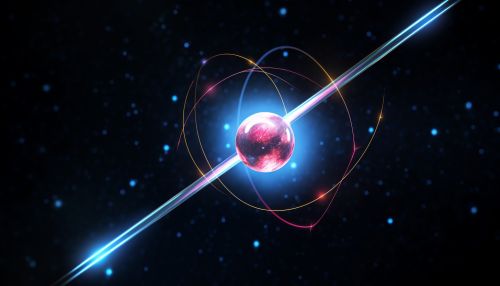Quantum Spin
Quantum Spin: An Overview
Quantum spin is a fundamental property of elementary particles, such as electrons and quarks, in quantum mechanics. It is a form of angular momentum that is intrinsic to particles, independent of any motion of the particle. Quantum spin is a cornerstone of quantum mechanics and plays a vital role in many physical phenomena, including the structure of atoms and the behavior of elementary particles.


Understanding Quantum Spin
Quantum spin is often visualized as a particle spinning around an axis, much like the Earth spins on its axis. However, this is a simplification. In reality, quantum spin is a quantum mechanical property and does not involve any physical rotation. It is a non-classical form of angular momentum that is intrinsic to particles.
Quantum spin can take on only certain values. For particles like electrons, protons, and neutrons, which are known as fermions, the spin is always half-integer (e.g., -1/2, 1/2). For particles like photons and gravitons, which are known as bosons, the spin is always an integer (e.g., -1, 0, 1).
Spin and Quantum States
The quantum state of a particle is described by a wavefunction, which is a mathematical function that provides information about the probability distribution of the particle's position. The spin of a particle is included in this wavefunction, and it affects the behavior of the particle in significant ways.
For example, the Pauli exclusion principle states that no two fermions can occupy the same quantum state simultaneously. This principle, which arises from the properties of fermions' half-integer spin, is responsible for the structure of the periodic table of elements. It explains why electrons in an atom fill up different energy levels, leading to the structure of the atom and the chemical properties of the elements.
Spin in Quantum Field Theory
In quantum field theory, particles are viewed as excitations of underlying quantum fields. Each type of particle corresponds to a different field, and the spin of the particle is related to the properties of this field. For example, the electron corresponds to an electron field, and its spin-1/2 property reflects the fact that the electron field is a fermionic field.
Quantum field theory also introduces the concept of spin-statistics theorem. This theorem links the spin of a particle to its statistics - that is, whether it is a fermion or a boson. According to the theorem, particles with half-integer spin (fermions) obey Fermi-Dirac statistics, while particles with integer spin (bosons) obey Bose-Einstein statistics.
Spin and Relativity
The concept of spin becomes even more significant when considering special relativity. In the relativistic theory of quantum mechanics, known as quantum electrodynamics (QED), spin is a crucial component. It is necessary for the consistency of the theory and for the correct description of particles' behavior at high speeds.
In QED, particles interact by exchanging photons, which are spin-1 particles. The spin of the photons and the particles involved in the interaction determines the probabilities of different outcomes, as calculated using the techniques of Feynman diagrams.
Experimental Observations of Spin
The existence and properties of spin have been confirmed by numerous experiments. One of the earliest was the Stern-Gerlach experiment, which demonstrated that silver atoms passing through a magnetic field are deflected in a way that can only be explained if the atoms have an intrinsic angular momentum, or spin.
Later experiments with electrons in magnetic fields, known as electron spin resonance (ESR) experiments, have provided further evidence for the existence of spin and have allowed precise measurements of the spin g-factor, a quantity that characterizes the magnetic properties of the spin.
Implications and Applications of Spin
The concept of spin has numerous implications and applications in physics and technology. In condensed matter physics, the spin of electrons is responsible for magnetism. In nuclear physics, the spins of protons and neutrons play a crucial role in the structure of nuclei.
In technology, the spin of electrons is the basis for spintronics, a new technology that aims to use the spin of electrons to store, process, and communicate information. Spintronics has the potential to revolutionize the field of electronics by making devices smaller, faster, and more energy-efficient.
